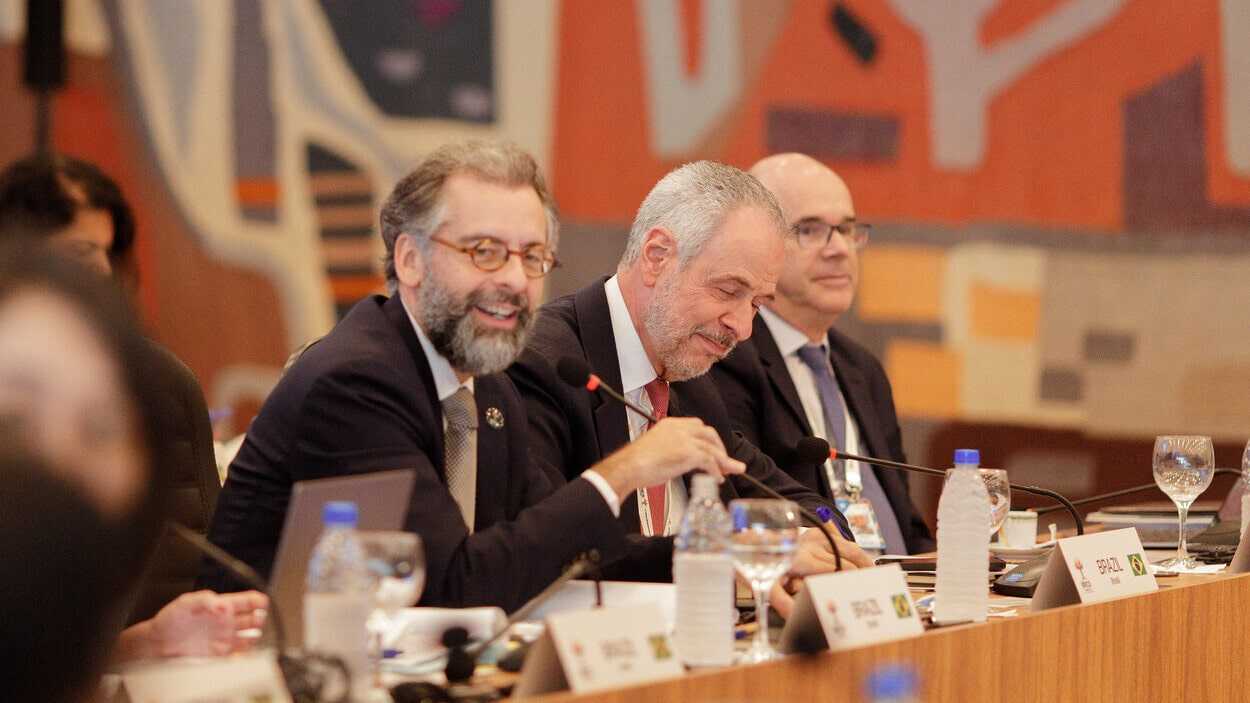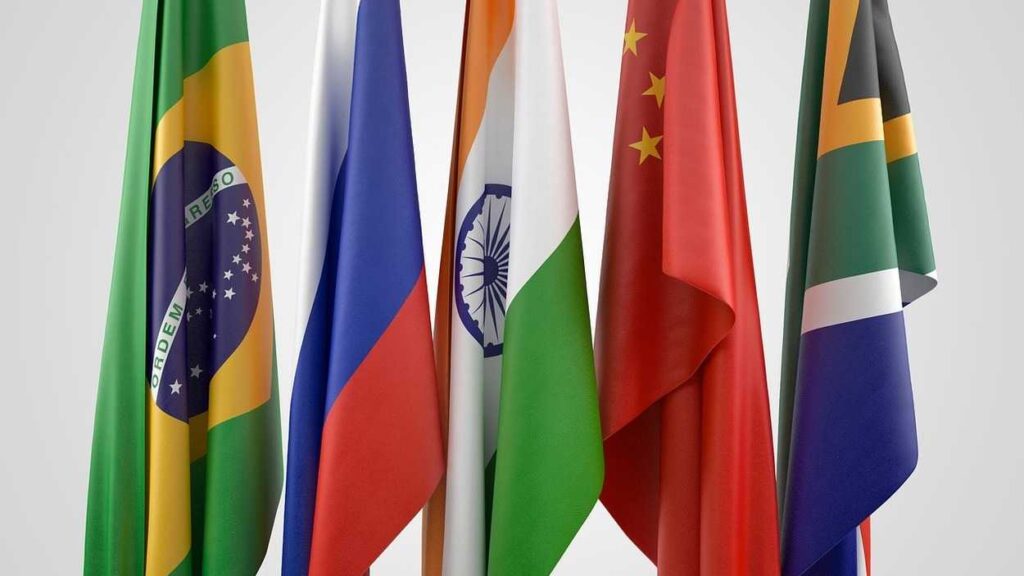Humanism
To Have or to Be? How to Truly Live Through the Holiday Season
22 December 2025

The 17th BRICS leaders' summit will take place in Rio de Janeiro on July 6-7, 2025. The group now counts 10 members: Brazil, Russia, India, China, South Africa, Egypt, Ethiopia, Indonesia, Iran, and the United Arab Emirates. It also has 9 partner states: Belarus, Bolivia, Cuba, Kazakhstan, Malaysia, Nigeria, Thailand, Uganda, and Uzbekistan, with Algeria, Turkey, and Vietnam waiting to join. This impressive list of countries raises concerns from our perspective, especially with Russia and Belarus involved. Is the group truly united enough to be a prominent voice? Does it genuinely pose a threat to us? What is the challenge we face?
We have likely all come to terms with the idea that the current world is multipolar. The United States remains the strongest country on Earth, and the European Union still sets standards in many fields. However, in other parts of the globe, this status faces increasingly clear challenges. Chinese citizens pay no mind to EU standards; they don’t even know such things exist. Russia, waging an offensive war against neighboring Ukraine for several years, also challenges the entire West in the realm of ideas, questioning not only the principle of territorial integrity of states but also democracy as a political system. The expanding BRICS group serves as the primary forum where theses challenging Western dogmas are voiced. To what extent does it threaten the existing order? How integrated is it? Will it introduce a common currency? Such questions are increasingly loud in the public sphere, especially as we approach the BRICS summit 2025.
The BRICS group emerged in the first decade of the 21st century. The idea came from Jim O’Neill, a British financier associated with Goldman Sachs. He believed that the rapid growth of countries outside the Western center – Brazil, Russia, India, and China – would lead to a re-scaling of the world economy, and consequently, force the world’s wealthiest nations to change their global policy. He proposed expanding the G7 group to include these countries and establishing far-reaching cooperation with them.
However, events unfolded somewhat differently than O’Neill envisioned. The mentioned countries initiated cooperation among themselves, but in a way that, instead of drawing closer to the West, they began to distance themselves from it. 2008 was a breakthrough year: the global financial crisis erupted, the Olympic Games took place in China, and Russia attacked Georgia. All these events demonstrated that the Western world increasingly had to reckon with the voices of states beyond its influence. Meanwhile, criticism of Western actions intensified in these countries, as did resentment over international financial and political institutions failing to account for the shifting balance of power and disregarding demands from outside Europe and North America.
In 2009, the BRIC group formed at a leaders’ summit in Yekaterinburg. A year later, South Africa joined, adding the “S” for “South Africa” to the name – thus shaping the club’s original composition and its name.
Worth reading: Farewell to Africa: How Russia is Replacing France

From its very beginning, the group criticized existing global financial and political institutions, primarily the World Bank, the International Monetary Fund, and to a lesser extent, the United Nations. BRICS leaders at every summit emphasized that these institutions are unfairly structured, failing to consider the interests of their states – effectively, the majority of humanity. BRICS sought to change this arrangement in two ways: by pushing for reforms (though largely ineffectively) and by attempting to create their own alternative institutions.
So far, BRICS has established only one joint institution: the New Development Bank, headquartered in Shanghai. It began operations in 2015. Initial fears that it would become merely a propaganda institution without real significance have at least been partially allayed – to date, the bank provides development loans to member countries, though its role remains smaller than even that of the similar, more China-influenced, Asian Infrastructure Investment Bank.
Consequently, the New Development Bank does not currently counterbalance institutions like the World Bank. Nor does it appear likely to change in the foreseeable future.
Towards the end of the second decade of the 21st century, the term “Global South” emerged in political discourse and international journalism, referring to countries outside the orbit of the “Global North,” or more generally, Western countries. This term quickly gained popularity. The BRICS group is sometimes considered the voice of the Global South, and sometimes not, due to Russia’s participation. The term “Global South” also refers to a certain shared destiny, both historical (colonialism and multifaceted exploitation) and contemporary (multifaceted exploitation).
The COVID-19 pandemic, another global crisis, spurred BRICS’s development and strengthening. During this period, the group countries intensified cooperation on medical research, particularly concerning vaccines and their distribution in Global South countries. Interest in BRICS surged during this time, and requests from additional countries to join the club became increasingly vocal. The aforementioned New Development Bank proved to be an “antechamber” for BRICS participation. In 2021, Bangladesh and the United Arab Emirates joined the bank, followed by other nations.
In 2023, at the Johannesburg summit, additional countries joined the group, and a year later, in Kazan, the partner state status was established. Currently, BRICS has 10 members and 9 partners, with more countries likely to be accepted soon. The combined GDP of BRICS countries now exceeds that of the G7 group, underscoring the growing significance of the BRICS summit 2025 and future gatherings.
For several years, BRICS countries have discussed the prospect of creating a common clearing currency to replace the hitherto omnipresent US dollar. This initiative, based on cryptocurrencies, however, is unlikely to gain significant traction in the foreseeable future. The differences in interests among member countries are simply too vast.
Currently, BRICS’s greatest strength lies in its working group meetings; two to three such events occur daily. This enables officials from member countries to exchange experiences and establish valuable contacts. Durable structures are built on such foundations.
What situation does the expansion and strengthening of BRICS create for the West and Poland? Despite declarations, the group does not possess an unambiguously anti-Western character. Nor is it “Putin’s club” or “Xi Jinping’s club,” although both leaders are members. Instead, it reflects a changing global balance of power. It is also a field of rivalry between two Asian powers: China and India.
By mutually checking each other, they prevent BRICS from adopting a more unambiguous character. However, the West cannot ignore either the existence of BRICS or, even more so, the Global South. Poland should intensify its activities in the Global South, conduct a more visible policy, support Polish companies already operating there, and encourage other firms to expand into those markets. The Global South presents a significant opportunity for Poland, highlighted by developments stemming from the BRICS summit 2025.
Read more: The Dream of Paradise on Earth Never Dies. Hell Comes as Part of the Package

Science
22 December 2025


Zmień tryb na ciemny